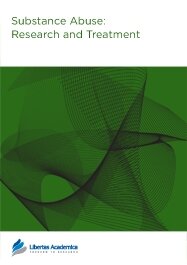

Publication Date: 31 Oct 2008
Journal: Substance Abuse: Research and Treatment

Department of Psychiatry, Division of Alcohol and Drug Addiction, Neurobehavioral Research Laboratory and Clinic, 7703 Floyd Curl Drive, MC 7792, San Antonio, TX 78229-3900, United States of America.
Abstract
Adolescent suicidal behaviors and substance use are disturbingly common. Research suggests overlap of some of the etiological mechanisms for both adolescent suicidal behavior and substance use, yet clear understanding of the complex relations between these behaviors and their causal underpinnings is lacking. A growing body of evidence and a diathesis model (Mann et al. 1999; Mann, 2003) highlight the importance of impulse control as a proximal risk factor for adolescent suicidal and substance use behaviors. This literature review extends current theory on the relationships between adolescent suicidal behavior and substance use by: (1) examining how, when, and to what extent adolescent development is affected by poor impulse control, stressful life events, substance use behavior, and biological factors; (2) presenting proposed causal mechanisms by which these risk factors interact to increase risk for suicidal behaviors and substance use; and (3) proposing specific new hypotheses to extend the diathesis model to adolescents at risk for suicide and substance use. More specifically, new hypotheses are presented that predict bidirectional relationships between stressful life events and genetic markers of 5-HT dysregulation; substance use behavior and impulsivity; and substance use behavior and suicide attempts. The importance of distinguishing between different developmental trajectories of suicidal and substance use behaviors, and the effects of specific risk and protective mechanisms are discussed. Use of new statistical approaches that provide for the comparison of latent growth curves and latent class models is recommended to identify differences in developmental trajectories of suicidal behavior and substance use. Knowledge gained from these prospective longitudinal methods should lead to greater understanding on the timing, duration, and extent to which specific risk and protective factors influence the outcomes of suicidal behavior and substance use. In turn, findings from these studies should inform researchers who conduct future treatment and prevention studies.
PDF (310.57 KB PDF FORMAT)
RIS citation (ENDNOTE, REFERENCE MANAGER, PROCITE, REFWORKS)
BibTex citation (BIBDESK, LATEX)
I very much enjoyed the experience of publishing with Substance Abuse: Research and Treatment. The editorial and review staff were very helpful and understanding throughout, even when a very large and complex project was being undertaken, and a range of subjects had to be reviewed. The editor was sympathetic and understanding of the author's responses, and this combined and coordinated interplay has allowed major conceptual advances to be made with major implications for the improvement ...

All authors are surveyed after their articles are published. Authors are asked to rate their experience in a variety of areas, and their responses help us to monitor our performance. Presented here are their responses in some key areas. No 'poor' or 'very poor' responses were received; these are represented in the 'other' category.See Our Results
Copyright © 2013 Libertas Academica Ltd (except open access articles and accompanying metadata and supplementary files.)
FacebookGoogle+Twitter
PinterestTumblrYouTube